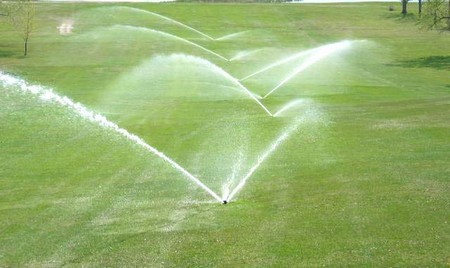Looking after your playing equipment is necessary to extend the life and resale value of your clubs and to improve their playability. The basics to good club maintenance are neither time consuming nor difficult.
Heads
Keeping the grooves on the clubface free of dirt is important. The grooves are designed to grip the ball at impact and therefore impart more backspin. If the grooves are filled with dirt, backspin is reduced.

The other aspects of care depend on the material from which the clubheads are made.
Hard-wearing stainless steel heads require very little maintenance, other than keeping them clean. When the finish becomes dull, you can have them machine buffed to look as new.
Mild steel needs more care because the chromed clubhead is susceptible to rust. As soon as you detect rust spots, you should remove them with steel wool or a fine sand paper or, better still with a cream cleanser used for enamel surfaces in kitchens, and a small scrubbing brush. This will remove the rust with the least amount of abrasion to the clubhead. A coat of iron oil protects the heads temporarily.
You should not leave your golf bag in the trunk of your car longer than necessary. If you have been playing in wet conditions and your equipment is damp, humidity can build up in the trunk of the car and cause the clubheads to develop rust more quickly.
Wet weather also poses a problem for wooden-headed clubs. Make sure you dry your Pine club golf properly before putting the head cover back on. If the inside of the cover becomes damp, it is best to leave it off altogether, otherwise moisture can soak into the clubhead and cause the wood to swell.
If the head covers are off, be careful when taking other clubs out of your bag to avoid bumps in the wood and marks on the head. Wood oil keeps the heads from cracking if the veneer flakes off, but revarnishing them is the better option.
Shafts
The common chromed mild steel shaft will corrode. Any rust should be removed in the same way I recommended for mild steel clubheads’.
i
Moisture can get trapped in steel shafts when you play in wet weather and water settles inside the bottom of your golf bag. The butt end of the grip gets wet and as you turn the club up to take your address position for the shot, small amounts of water can run down through the hole at the top of the grip and into the shaft, starting corrosion inside.
If the hole in the grip hasn’t been sealed off with adhesive tape when the grip was fitted you can prevent the steel shafts from rusting inside by putting tees in the tops of all your grips to keep them above any water that may be in your bag. Even if the grips do get wet, no water will run down the shaft.
Corrosion is not a problem with graphite shafts but the coating can wear off where the shaft rubs on your bag. This doesn’t affect the performance of the shaft in any way but will reduce the club’s resale value. If you carry graphite shafts choose a golf bag with a padding on the rim and dividers to stop the shafts wearing.
Titanium shafts are maintenance-free, which you can only get from a Titanium Supply company. They don’t rust and don’t wear.
Grips
Grips become slippery because of a build up of grit, putting a shiny coating over the rubber, leather or synthetic.
All you need is soapy water and a small scrubbing brush to clean the grips regularly, after every two or three rounds of golf. Removing the dirt will give the grips the tackiness they had when new.
Gadgets
Among the useful gadgets on the market are pitchforks, which are used to repair pitch marks on the green and to clean the grooves of your clubs. A tee will serve both purposes but the bladed edge of this pitch fork is more effective.
One of the best inventions I’ve seen is a tube filled with water and detergent, which has a small brush attached, and clips onto your bag. You just give the plastic tube a slight squeeze, and you can clean the clubhead or grip, or your shoes for that matter.
They are particularly good if you have cavity-backed irons as the brush will remove any debris from the back of the clubhead. The tubes are inexpensive, durable and very effective.
At the very least you should carry a towel with you when you play golf, keeping one end damp so you can clean your golf balls or clubs along the way.
Golf Bags
You want a bag that will house your clubs safely without having them jammed in. A bag with a club compartment of nine inches in diameter will meet your needs although you can get up to an 11-inch bag. Make sure the bag has strong stitching, good zippers and enough pockets.
You need one large pocket for additional clothing, wet weather gear and towels, a smaller one near the base of the bag for golf balls, another for tees and yet another for wallets, car keys and tubes of sun screen. Near the top should be another small pocket in which you can keep your scorecard and gloves.

The club compartment should be divided into six sections. Some bags have padded dividers running down to the bottom of the bag which is particularly important if you have graphite-shafted clubs, as the coating on the shaft will wear on vinyl dividers, while the ferrules, the caps where the shafts enter the hosel of the club, can be marked over a long period.
Most large bags are made from heavy-duty vinyl which is long wearing, waterproof, and easy to clean. While leather was the preferred choice some years ago, not many bags are made from it these days because of the prohibitive cost and need for regular conditioning of the leather.
With a diameter of six or seven inches, lightweight bags can make a tight squeeze for your clubs and damage the grips. They are also susceptible to being cut and ripped. They are not waterproofed either.
It is a good idea to get a coverall, which protects your bag on trips. These are made from vinyl or canvass. If your budget allows you can purchase a solid plastic carry case. The coveralls increase the life of your bag and reduce the amount of cleaning you need to do.